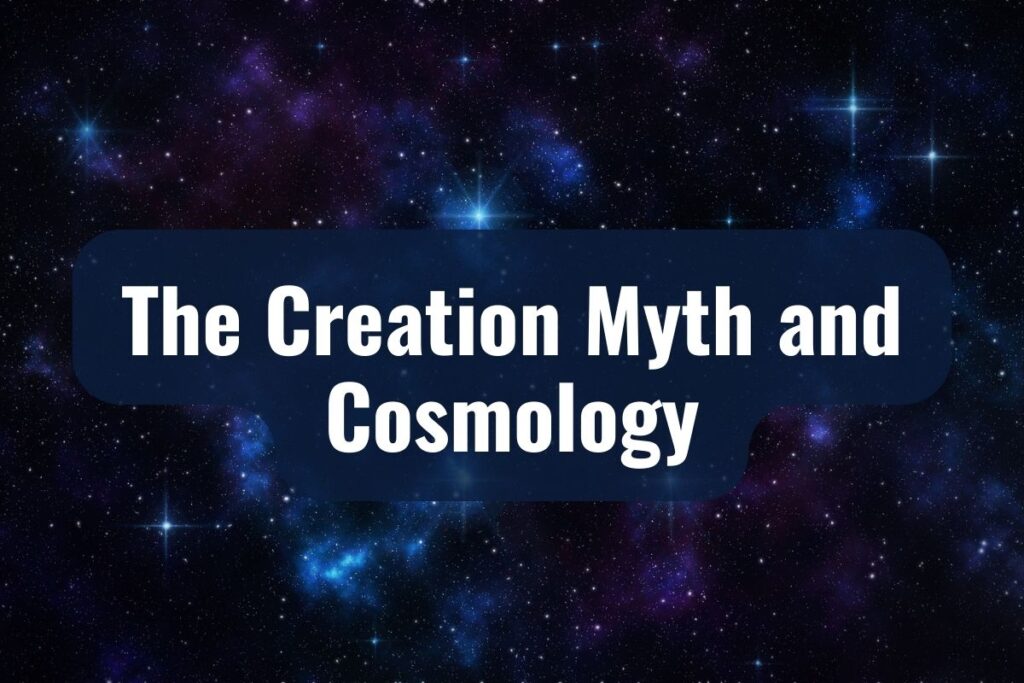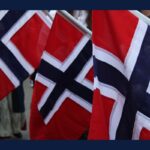Norse mythology, a gem in the crown of ancient Scandinavian culture, offers a rich tapestry of tales, deities, and legends that have been passed down through centuries. Far from being mere myths, these stories were the bedrock of belief and cultural identity for the people of what is now Norway, Sweden, and Denmark.
As we delve into the world of the Norse gods, we embark on a journey through time, unearthing the beliefs and traditions that have influenced Nordic societies for generations.
Key Takeaways
- Norse mythology provides a deep insight into ancient Scandinavian culture and beliefs.
- The Norse creation myth and cosmology depict a complex, interconnected universe.
- Major Norse gods like Odin, Thor, and Freyja embody diverse aspects of life and nature.
- Lesser-known deities and figures enrich the Norse mythological landscape.
- Valkyries, dwarves, giants, and elves add complexity to Norse mythology.
- Norse rituals and worship practices reveal a deep connection with the divine.
Norse Gods: Shapers of History and Culture
At the heart of Norse mythology lie the gods and goddesses, each embodying different aspects of life, nature, and human experience. From Odin, the wise Allfather, to Thor, the boisterous god of thunder, these deities played a pivotal role in shaping Norse cosmology.
Their stories, filled with heroism, betrayal, and magic, are not just entertaining narratives; they offer profound insights into the values, fears, and aspirations of the Norse people.
The Creation Myth and Cosmology

The Dawn of the Norse Universe
The Norse creation myth, steeped in mystique and grandeur, is a tale of beginnings, of the world emerging from a chasm of possibilities. In the yawning void known as Ginnungagap, heat and cold collided, giving birth to the primordial entities from which the world was crafted. This cosmic narrative sets the stage for a universe rich in landscapes and beings, each intertwined in the fabric of Norse cosmology.
The Elemental Giants and the First Gods
Central to the Norse creation story are the elemental giants, Ymir and Audhumla, emerging from the realms of fire (Muspelheim) and ice (Niflheim).
From Ymir’s body, the world was shaped: his flesh turned into the earth, his blood into the seas, his bones into mountains, and his skull into the sky. Audhumla, the nurturing cow, provided sustenance and also revealed Buri, the first of the Aesir gods, from a block of ice.
The Formation of the Nine Worlds
Around the World Tree, Yggdrasil, the Norse universe expanded into nine realms, each a unique world with its inhabitants and characteristics. These included Asgard, the realm of the gods; Midgard, the world of humans; Jotunheim, the land of giants; and others like Alfheim, Nidavellir, and Helheim.
Yggdrasil itself, an immense ash tree, connected these worlds, symbolizing the interconnectedness of all life in Norse belief.
Yggdrasil: The Axis Mundi
Yggdrasil was more than just a cosmic structure; it was the spiritual and physical anchor of the Norse cosmos. Its roots delved into the deepest parts of the underworld, its trunk rose through the mortal and divine realms, and its branches stretched into the heavens.
Alongside the tree existed various creatures, including the dragon Nidhogg, which gnawed at its roots, and the eagle perched atop its highest branch, representing the ever-present tension between destructive and protective forces.
Major Norse Gods

| God/Goddess | Domain | Notable Attributes | Symbol/Item |
| Odin | Wisdom, War, Magic | One-eyed, wise, wanderer | Spear (Gungnir) |
| Thor | Thunder, Strength | Powerful, protector, red-haired | Hammer (Mjölnir) |
| Freyja | Love, Beauty, Fertility | Beauty, dual-natured, magic | Necklace (Brisingamen) |
| Loki | Trickery, Change | Cunning, shape-shifter, complex | – |
Odin: The Allfather and King of Asgard
Odin, the chief of the Aesir and ruler of Asgard, stands as a central figure in Norse mythology. Known as the Allfather, he is a god of war, wisdom, poetry, and magic.
Odin’s quest for knowledge is legendary; sacrificing his eye at the Well of Mimir for a drink of cosmic wisdom. He is often depicted as a wanderer, an old man with a long beard, cloak, and hat, traversing the world in search of understanding.
Thor: The Mighty God of Thunder
Thor, perhaps one of the most well-known Norse gods, is the deity of thunder, lightning, storms, oak trees, strength, the protection of mankind, and also hallowing and fertility. Son of Odin, he is often portrayed as a large, powerful man with red hair, wielding his famous hammer, Mjölnir.
This hammer, a symbol of protection and power, could level mountains and return to Thor’s hand after being thrown. Thor’s battles against the giants are numerous, showcasing his role as a protector of Asgard and Midgard (the human world).
Freyja: The Goddess of Love, Beauty, and Fertility
Freyja, a member of the Vanir tribe of deities, is a goddess of love, beauty, fertility, sex, war, and gold. She rides a chariot pulled by two cats and possesses a cloak of falcon feathers.
Freyja is also associated with seiðr, a form of Norse magic concerned with discerning and altering fate. Her hall in Asgard, Sessrúmnir, is said to be a place of great beauty and peace, where she receives half of those who die in battle, the other half going to Odin.
Loki: The Trickster and Shape-Shifter
Loki, a complex and controversial figure in Norse mythology, is known for his cunning, trickery, and shape-shifting abilities. Though not inherently evil, Loki’s mischief and desire for self-preservation often lead him into conflict with the other gods.
His antics and schemes range from harmless pranks to causing significant trouble in Asgard. Despite his troublesome nature, Loki’s actions are sometimes beneficial, and he plays a crucial role in many Norse myths, highlighting the ambiguous and multifaceted nature of the Norse gods.
Lesser-Known Deities and Figures
Aegir and Ran: Deities of the Sea
Aegir and Ran, often overshadowed by their more famous counterparts, hold dominion over the sea in Norse mythology. Aegir, known as the god of the ocean, is portrayed as a jolly giant who hosts elaborate feasts for the gods in his underwater hall.
His wife, Ran, is the goddess of the sea’s treacherous aspects. She is known for capturing sailors with her net and dragging them to the ocean’s depths. Together, they symbolize the ocean’s dual nature: bountiful and benign on one hand, capricious and dangerous on the other.
Skadi: Goddess of Winter and Hunting
Skadi, a jötunn (giantess) and goddess associated with winter, skiing, bowhunting, and the mountains. Her story is one of strength and independence.
She is known for her marriage to the god Njord, which ultimately failed due to their love of different realms: she preferred the mountains while Njord loved the sea. Skadi’s character reflects the harshness and beauty of the Nordic winters, and her prowess in hunting and skiing demonstrates the respect the Norse had for survival skills in challenging environments.
Baldr: The Beloved God
Baldr, the son of Odin and Frigg, is a god associated with beauty, love, happiness, and purity in Norse mythology. His death, caused by the trickery of Loki, is one of the most significant and poignant stories in Norse lore.
Baldr’s demise sets off a chain of events leading to Ragnarok, the end of the world. The story of Baldr touches on themes of innocence, loss, and the inexorable nature of fate, showcasing the depth and emotional resonance of Norse mythology.
The Role of Valkyries and Other Mythical Beings

Valkyries: Choosers of the Slain
The Valkyries, among the most captivating and mysterious figures in Norse mythology, served as Odin’s handmaidens and choosers of the slain. These warrior women rode over battlefields on their winged horses, selecting the bravest of the fallen warriors to bring to Valhalla, Odin’s hall.
Valkyries were not only symbols of death and war but also represented the honor and glory of the afterlife for warriors. They were revered for their strength and feared for their power to decide who lives and who dies in battle.
Dwarves: The Master Craftsmen
Dwarves, or dvergar, were known as skilled craftsmen and metalworkers, living beneath the ground in a realm called Svartalfheim. They were responsible for creating some of the gods’ most powerful and famous artifacts, including Thor’s hammer Mjölnir, Odin’s spear Gungnir, and Freyja’s necklace Brisingamen.
Despite their small stature, dwarves were regarded as beings of great wisdom and magical abilities, their craftsmanship unmatched by any other in the Norse cosmos.
Giants: The Ancient Adversaries
Giants, or Jotnar, in Norse mythology, were often portrayed as the enemies of the gods, though their relationship with the Aesir and Vanir was complex and nuanced. They represented the forces of chaos and nature, often clashing with the gods’ order.
However, giants were not merely antagonists; they were also essential to the world’s balance, and many gods, including Thor and Odin, had giantesses in their lineage.
Elves: The Enigmatic Nature Spirits
Elves, divided into light (Ljósálfar) and dark (Dökkálfar), were another mysterious group in Norse lore. The light elves were considered benevolent beings associated with light and beauty, residing in Alfheim.
In contrast, the dark elves were thought to dwell underground and were less friendly to humans. Elves in Norse mythology are less defined than other beings, shrouded in mystery, and their true nature and role remain a subject of fascination.
Rituals and Worship
Honoring the Norse Pantheon
In the Norse world, the worship of gods was an integral part of daily life, rooted deeply in the natural and social environments of the people.
Rituals and ceremonies were not only acts of devotion but also means of ensuring harmony between the human and divine realms. These practices, varied and rich in symbolism, offer insights into the spiritual life of the Norse people.
Sacrifices and Offerings: The Blót
The blót was a key ritual in Norse religion, involving the sacrifice of animals or other offerings to the gods. These sacrifices were made to gain favor, ensure a good harvest, or seek guidance in times of trouble.
The blót could be a communal affair, bringing together entire communities in celebration and worship, or a more personal act of devotion. The blood of the sacrificed animal, considered sacred, was sprinkled on the participants and the altar, symbolizing the bond between the gods and their worshippers.
Festivals and Seasonal Celebrations
The Norse calendar was marked by various festivals, each associated with specific deities and seasonal changes. Yule, celebrated during the winter solstice, was a time of feasting in honor of Odin and a celebration of the returning light. Other festivals, like the summer solstice, were marked by communal gatherings, games, and rituals to ensure fertility and prosperity.
Seidr: The Magic of the Norse
Seidr was a form of magic practiced in the Norse world, often associated with prophecy and altering destiny. This practice, typically linked with the goddess Freyja, involved trance-like states and rituals to gain insights into the future or to influence certain outcomes.
Seidr practitioners held a respected, sometimes feared, position in Norse society, reflecting the deep connection the Norse felt with the mystical and the unknown.
Runes: The Sacred Script
Runes, more than just an alphabet, held a sacred place in Norse culture. They were believed to possess magical properties and were used in various rituals and divination practices.
Carving runes could be an act of worship or a way to invoke the gods’ power, demonstrating the intertwining of language, writing, and religious practice in Norse society.
Influence on Modern Culture

Norse Mythology in Contemporary Arts and Literature
The timeless tales of Norse gods and their exploits have transcended centuries, influencing modern culture in a myriad of ways. Contemporary literature has seen a resurgence of interest in Norse mythology, with authors drawing inspiration from the rich tapestry of gods, giants, and mythical creatures. These ancient stories have been reimagined in novels, poetry, and children’s books, showcasing their adaptability and enduring appeal.
Norse Gods in Media and Entertainment
In the realm of media and entertainment, Norse mythology has found a significant foothold. Movies, television series, and video games often feature characters like Thor, Odin, and Loki, albeit sometimes with creative liberties.
These adaptations not only bring Norse myths to a broader audience but also reinterpret them in new and exciting ways, keeping the ancient lore alive and relevant in the digital age.
The Impact on Language and Names
Norse mythology has also left its mark on the English language, with days of the week named after Norse gods: Thursday (Thor’s Day), Wednesday (Odin’s Day), and Friday (Freyja’s Day). Furthermore, many personal names and place names in Scandinavia and beyond have roots in Norse mythology, reflecting the deep cultural impact of these ancient stories.
Norse Mythology in Art and Symbolism
In art, Norse mythology continues to inspire artists, influencing everything from painting and sculpture to modern graphic design and tattoo art. Symbols from Norse mythology, like Thor’s hammer (Mjölnir), the Valknut, and Yggdrasil, the World Tree, are popular motifs, often imbued with meanings of strength, resilience, and connection to nature.
Educational and Scholarly Interest
Academically, Norse mythology remains a subject of fascination, with scholars delving into its origins, evolution, and impact on Northern European history and culture. This scholarly interest ensures that Norse mythology is not only preserved as a historical curiosity but also understood in its cultural and sociological contexts.
Through its profound influence on literature, art, language, and entertainment, Norse mythology continues to captivate the imagination of people around the world. Its legacy is a testament to the enduring power of storytelling and the human fascination with the divine and the mystical.


